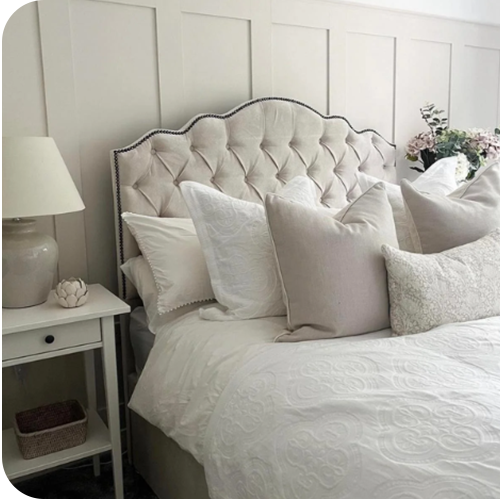Is it Good to Sleep on Wooden Beds?
Sleep is crucial for our well-being, and the choice of where we sleep profoundly influences the quality of our rest. Wooden beds have been a staple across cultures and eras, offering more than just a place to lay our heads. Let’s delve into the benefits and considerations of sleeping on wooden beds.
Table of contents
Sleeping on Wooden Beds
Wooden beds have a rich history, dating back centuries. They have maintained their popularity due to various advantages, both practical and aesthetic. In today’s world, where comfort and wellness take precedence, wooden beds offer a unique blend of tradition and functionality.
Advantages of Sleeping on Wooden Beds
Better Support and Alignment
One primary benefit of wooden beds is their ability to provide robust support and alignment for the body during sleep. The natural firmness of wood ensures a more even distribution of weight, preventing discomfort and promoting better spinal alignment.
Natural Material Benefits
Wooden beds are crafted from natural materials, offering numerous benefits. They are hypoallergenic, reducing the risk of allergic reactions compared to synthetic materials. Additionally, wood has natural antibacterial properties, contributing to a healthier sleeping environment.
Enhanced Breathability
Wooden beds allow for better airflow, enhancing breathability during sleep. This feature helps regulate body temperature, preventing excessive sweating and discomfort, especially during warmer seasons.
Types of Wood Ideal for Beds
When choosing a wooden bed, the type of wood matters. Oak, pine, cherry, and other woods each offer distinct characteristics and benefits. Oak, known for its durability, provides exceptional strength and longevity. Pine, on the other hand, is lighter and more affordable, yet still robust.
| Type of Wood | Characteristics | Benefits |
| Oak | – Exceptional durability | – Exceptional strength and longevity |
| – Hardwood, resistant to wear | – Classic, timeless appearance | |
| – Often more expensive | – Sturdy and reliable | |
| Pine | – Lighter weight than oak | – More affordable |
| – Softwood, easier to work with | – Still robust and reliable | |
| – Susceptible to dents and scratches | – Lighter appearance | |
| Cherry | – Smooth grain and attractive color | – Rich, warm tones |
| – Moderately durable | – Ages beautifully | |
| – Can darken over time | – Elegant and refined appearance | |
| Maple | – Hardwood, sturdy | – Resists splitting and cracking |
| – Fine texture, takes finishes well | – Lighter tones, versatile aesthetics | |
| – Resists wear and tear | – Elegant and modern look |
Addressing Common Concerns
Some individuals worry about splinters and discomfort associated with wooden beds. Proper maintenance, such as sanding and polishing, can mitigate splinter risks. Additionally, using high-quality finishes and choosing well-crafted beds can significantly enhance comfort.
- Splinters: Wooden beds can sometimes develop splinters over time. Regular maintenance like sanding and polishing smoothens the surface, reducing the risk of splinters.
- Discomfort: Inferior quality wooden beds might lack proper finishing or have rough edges, causing discomfort. Opting for well-crafted beds with high-quality finishes ensures a smoother and more comfortable surface.
Durability: Concerns about wooden beds’ durability often arise due to potential wear and tear. However, hardwoods like oak or maple, coupled with proper care, can provide exceptional longevity.
Comparison with Other Bed Materials
Wooden beds differ from metal or upholstered beds in various ways. While metal beds may offer sleekness and modernity, wooden beds exude warmth and character. Upholstered beds, though plush, might lack the durability and natural benefits of wooden counterparts.
Eco-Friendly Aspect
Choosing a wooden bed can align with environmentally conscious choices. Wood, if sourced sustainably, is renewable and biodegradable, contributing to a greener lifestyle.When selecting a wooden bed, consider factors like personal comfort preferences, room size, and design aesthetics.As a result of sleeping on beds, we feel fresh and relax. Choosing the right bed ensures a comfortable and visually pleasing sleeping space.
Conclusion
Sleeping on wooden beds offers a blend of comfort, tradition, and health benefits. Their natural properties contribute to better sleep quality while adding a touch of elegance to bedrooms. Consider the type of wood, personal preferences, and room aesthetics when choosing a wooden bed for a restful and rejuvenating sleep experience.
FAQs
Wooden beds, especially those crafted from high-quality wood, are known for their durability and longevity.
Regular maintenance, such as polishing and occasional sanding, can ensure wooden beds remain in top condition.
Yes, many wooden bed manufacturers offer customization options to suit individual preferences and room aesthetics.
Woods like oak or maple, known for their hypoallergenic properties, are generally suitable for individuals with allergies.






